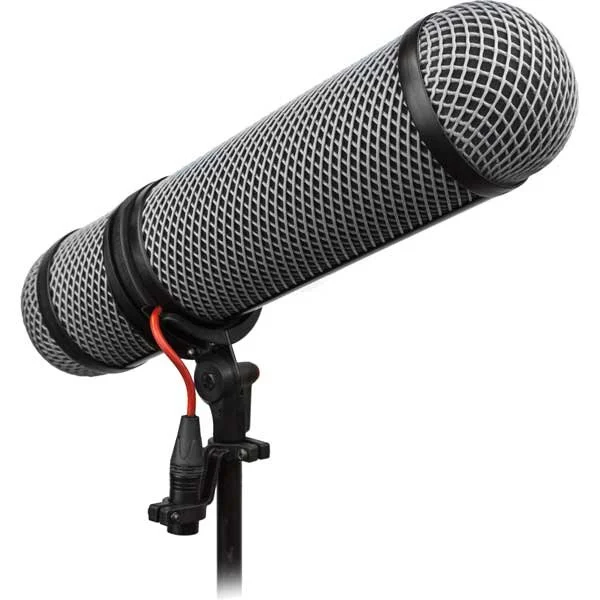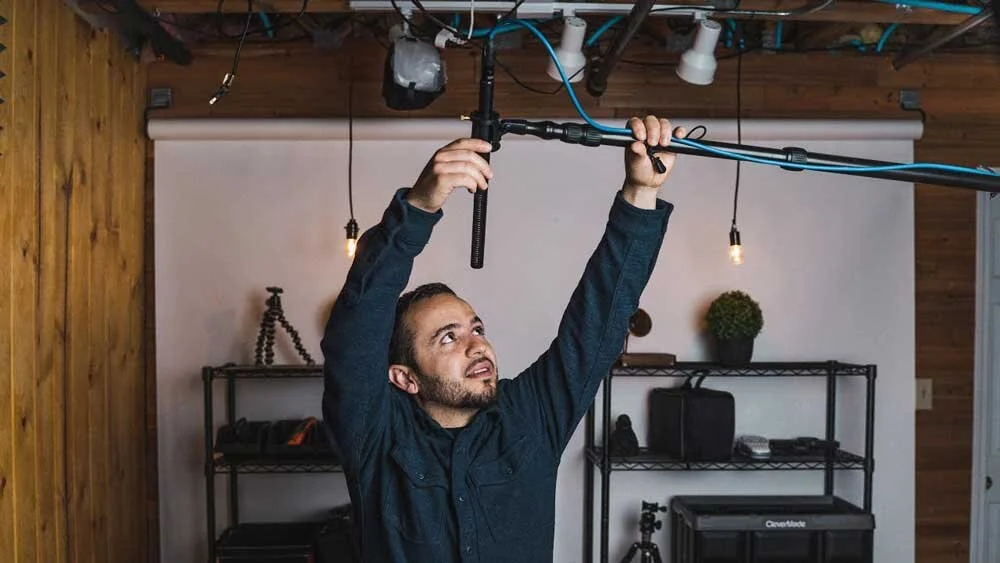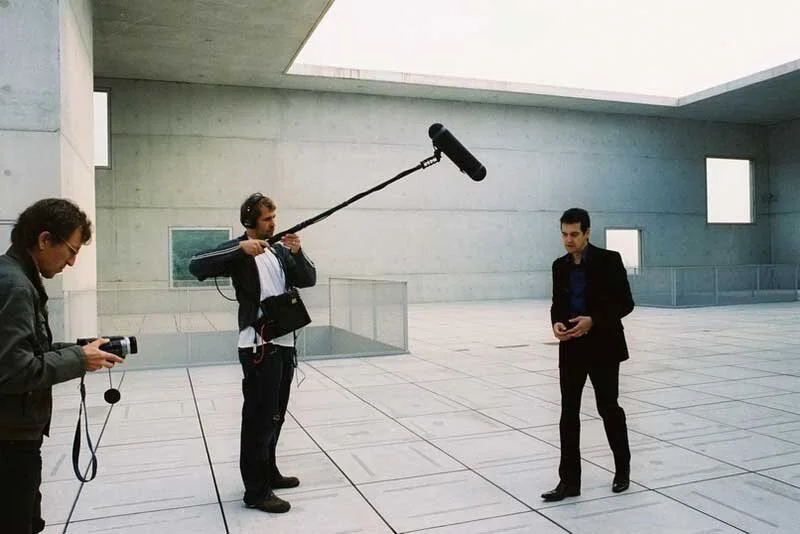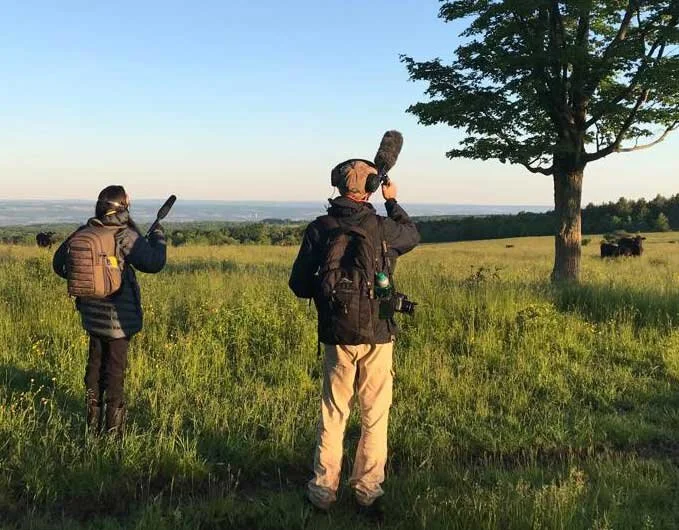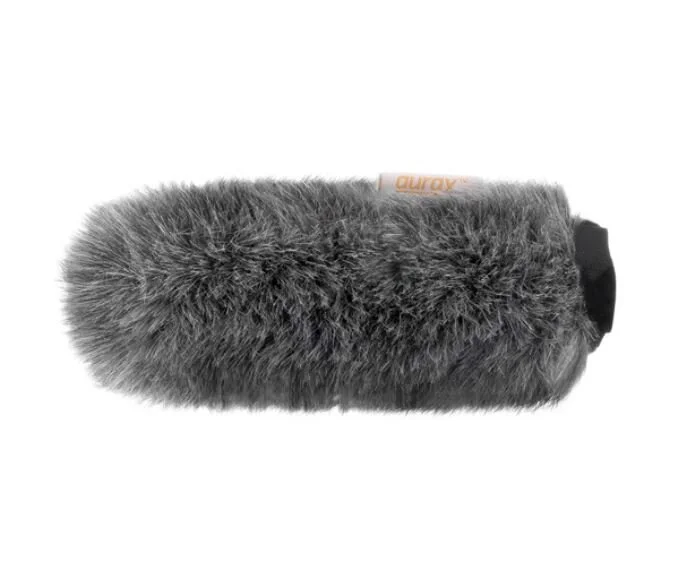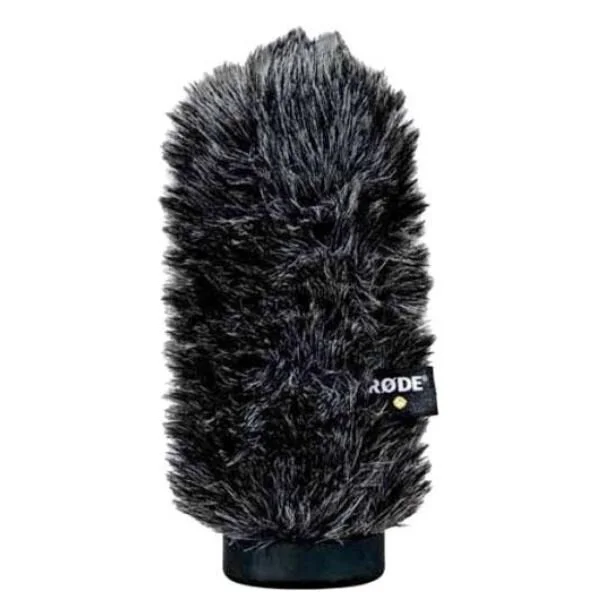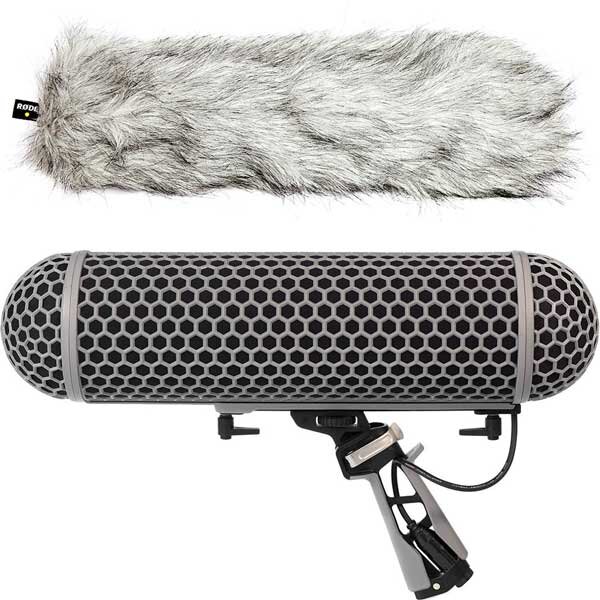Best Windscreens for Shotgun Microphones (Size and Budget)
Find the best fitting windscreen for your mic and budget in this article.
If you have ever used a shotgun microphone before, you know how sensitive it is to wind. Shotgun microphones are more susceptible to wind noise than any other microphone. This is because of their open-back capsule design.
In this article, we will look at the different types of windscreens available for shotgun microphones. By the end of this article, you will be able to make an educated decision on which windscreen is best for your needs.
Links on this page are affiliated with Sovrn and Amazon Associates networks.
Click here to jump straight to the best wind screen recommendations.
Different Kinds of Windscreens
Foam (low)
The foam windscreen offers the least protection from wind. It is usually a free accessory included with the purchase of your shotgun mic.
low wind protection
included with most shotgun microphones
protects up to 1 mph winds
Deadcat (medium)
A deadcat is a sleeve of fake fur and open-cell foam that slips directly over your shotgun microphone. The layer of hair blocks wind and creates a zone of still air around your microphone to mitigate wind noise.
medium wind protection
light-weight solution
protects up to 8 mph winds
Click here for deadcat recommendations
Blimp (high)
Blimps are designed to create an area of still air around the entire microphone, rather than just around the diaphragm. This larger pocket of “dead” air is better able to protect against wind distortion.
high wind protection
models with built-in shock mounts
protects up to 12 mph winds
Click here for blimp recommendations
Blimp + Deadcat (maximum)
In extreme conditions, pairing a blimp with a deadcat provides the maximum amount of wind protection. The large pocket of still air combined with a layer of fur is enough wind protection for almost any scenario.
maximum wind protection
models with built-in shock mounts
protects up to 18 mph winds
How Much Wind Protection Do You Need?
There are many levels of wind protection. The amount of protection you will need depends on your recording environment. I’ve listed common recording environments below, ranked from lowest wind threat to greatest.
Recording indoors solo gives you complete control over the environment allowing for low wind protection.
1. Indoors Controlled (zero): Recording stationary sounds indoors with only 1 person. Just you and your subject. Under these circumstances, there is virtually zero air movement. Not only that, it also eliminates any “surprises” that may stir up some wind caused by people walking by or turning on fans. This level of control makes for an “air-tight” environment, requiring zero wind protection.
Live streaming
YouTube video audio
Indoor sound effects
Musical instruments
Busy indoor environments have lots of air movement and unpredictability, requiring medium wind protection.
2. Indoors Uncontrolled (low): Recording sounds indoors with many people or unpredictability. These environments either have multiple subjects, busy environments, or a mixture of the two. There most likely will be movement around your microphone due to passing the mic, or people walking by. These environments require low wind protection.
Podcast
Interview
Recording a music group/band
Indoor ambiance
Boom operators must follow subjects while on set. This movement, depending on follow speed, requires medium wind protection.
3. Boom Operator (med/high): When operating a boom, you most certainly will have movement around your suspended shotgun mic. Not only is it impossible to hold a mic perfectly still, you will have scenes that require you to move while recording (following moving scenes/subject spotlight). These movements require medium wind protection.
Recording outdoors with a shotgun microphone requires a high level of wind protection.
4. Outdoors (maximum): If you find yourself outdoors with a shotgun microphone, you are going to need wind protection. Even on a calm day, a gust can kick-up and ruin your recording. Check the weather beforehand and prepare for winds greater than predicted. It is always better to be safe than sorry, especially if you are a professional working on a project or production. Depending on wind speeds, recording outdoors can require high wind protection.
RELATED: Shotgun Microphone Buyers Guide
Will It Fit My Microphone?
This is an important question to ask before purchasing wind protection. Shotgun microphones come in many different lengths and it is critical to select a windscreen that fits your mic.
Depending on the type of windscreen you’re shopping for, you’ll either have to know the overall length, or the length to the capsule.
While a blimp must fit the entire length of a shotgun microphone, a deadcat only needs to cover up to the capsule. Be sure to measure your microphone accordingly!
If you need a deadcat, you’ll have to measure the distance from the front of the mic to where the slotted holes in the barrel end. Your deadcat will slid over the microphone and must cover this distance at the bare minimum.
Another important measurement for a deadcat is diameter. Most mics are between 19-22 mm in diameter and will fit into most deadcats, but it’s best to confirm this before purchasing.
If you need a blimp, the overall length of your microphone is more important because the blimp has to encompass the entire microphone.
I have listed the supported size for each windscreen on this page for your convenience.
Below is a table listing the diameters and lengths of popular shotgun microphones:
| Manufacturer | Model | Length (mm) | Diameter (mm) |
|---|---|---|---|
| Rode | NTG5 | 203 | 19 |
| Rode | NTG1 | 219 | 22 |
| Rode | NTG4 | 225 | 22 |
| Sennheiser | MKH 416 | 250 | 19 |
| Rode | NTG3 | 255 | 19 |
| Sennheiser | MKE 600 | 256 | 20 |
| Rode | NTG4+ | 278 | 22 |
| Audio Technica | AT897 | 279 | 21 |
| Rode | NTG2 | 280 | 22 |
| Audio Technica | AT8035 | 369 | 21 |
Related: Best Shock Mounts For Shotgun Mics
Best Windscreens for Shotgun Microphones
Because almost all shotgun mics come with foam windscreens, this article focuses on deadcat and blimp recommendations. For each type of windscreen, I’ve listed 3 recommendations based on budget and experience levels. Click below to jump to that section.
Deadcat Windscreens:
Blimp Windshields:
Deadcats
Most Affordable:
Auray WSW-007 MKII Windbuster
The Auray WSW Windbuster is a dual layered windscreen offering the best bang for your buck.
With an inner depth of 7” and an adjustable opening, it will fit almost any shotgun mic.
Designed to fit over foam windscreen
Inner Depth: 7" / 178 mm
Compatible Mic Diameter: 22 mm
Enthusiast:
Rode WS6 Deluxe Windshield
The Rode WS6 Deluxe Windshield provides excellent noise protection against high wind and adverse weather conditions. The slip-on design of the WS6 features dimensions that accommodate any shotgun microphone with a length of 280mm and a diameter of 22.5mm.
Rubberized grip
Inner Depth: 6.25" / 160.5 mm
Compatible Mic Diameter: 21 to 22.5 mm
Professional:
Rycote Softie Windshield
The Softie Windshield has become the industry standard for wind protection on location. Rycote is the most trusted brand of professionals for wind protection because of their build quality and performance.
Both the acoustic foam and synthetic fur are made from materials which are specially designed and manufactured for the purpose, and as a result up to 25 dB of wind-noise reduction without any adverse effect on High-Frequency. In addition the foam is not susceptible to UV or moisture damage, giving this product great longevity.
Advanced materials, adhesives and assembly techniques all combine to make the Softie an extremely tough product that provides excellent wind protection in the harshest of environments.
25 dB of wind-noise reduction
Inner Depth: 7" / 178 mm
Compatible Mic Diameter: 19 to 22 mm
Blimps
Most Affordable
The Micolive Blimp Windshield is a clone of the popular Rode Blimp and is available for about half the price.
After researching the Micolive, it seems that the only differences are that it does not include a brush for the furry windscreen, the suspension system is not made by Rycote, the handle is more ergonomic but lacks the tactile, rubber finish of the Rode, and the furry windscreen is a very tight fit.
The windscreen is the biggest complaint about this product, prompting Micolive to make an instructional video about how to put it on → video.
Other than that, the two blimps have identical specifications. Given this, I think it’s safe to assume that its wind attenuation is the same as the Rode at about 40 dB.
Wind Attenuation: ≈ 40 dB
Max Mic Length: 325 mm
Compatible Mic Diameter: 19 - 22 mm
Weight: 550g (w/o deadcat)
Deadcat included
Pistol Grip included
Enthusiast:
The Blimp Windshield and Rycote Shock Mount Suspension System from Rode is an all-in-one package designed to provide your shotgun microphone with protection from wind noise and isolation from shock and vibration.
You get the blimp, dual Rycote shockmount, Rode pistol grip and pull-over deadcat all in one tidy package.
The Rode blimp will create a large pocket of calm air around your shotgun mic while holding it noiselessly between 2 shock mounts.
For very windy conditions, it includes a deadcat that fits over the entire blimp for next-level wind protection.
It also comes with the Rode pistol grip for hand-held recordings. Alternatively, it can be mounted to a mic stand or boom pole via standard 3/8” thread.
Although Rode doesn’t list a value for wind attenuation, Rycote makes a deadcat specifically for the Rode blimp and by their testing, they say their deadcat + the Rode blimp equals 50 dB of wind attenuation.
Rycote’s deadcats are some of the best and are rated for 10 dB of wind attenuation alone. Considering this, I think a good estimation for the Rode blimp is 40 dB of attenuation.
The biggest downside to the Rode Blimp is its slow setup time. The blimp is 3 separate pieces and is held in place with two tension screws. That’s 5 steps you’ll have to take every time you want put the blimp on/off or make a microphone change.
Wind Attenuation: ≈ 40dB
Max Mic Length: 325 mm
Compatible Mic Diameter: 19 - 22 mm
Weight: 550g (674g w/deadcat)
Deadcat included
Rode PG2-R Pistol Grip included
Professional:
Rycote Cyclone Windshield
If you are looking for a professional blimp with all the bells and whistles, the Cyclone Windshield from Rycote pulls out all the stops.
You’ll notice that the Cyclone has a very unique design. That’s because it’s wrapped in 3D-Tex, Rycote’s latest innovation.
This material is able to greatly reduce the speed of wind without the need of an additional fur layer. With this new technology, the Cyclone Blimp boasts a wind attenuation value of 50 dB.
This also makes the Cyclone lightweight. The entire basket, suspension system, and boom adapter weighs just 590g.
Besides being great at blocking wind and keeping things light, 3D-Tex is almost totally transparent with just -3 dB signal attenuation.
One of the best features on the Cyclone is its magnetic-locking basket. This design provides instant, one-hand microphone access for quick changes on the fly. Watch the video below to see this in action.
Wind Attenuation: 50dB
Max Mic Length: 280 mm
Compatible Mic Diameter: 19 - 25 mm
Weight: 590g
Deadcat not included (link to one here)
Boom adapter included
Support Acoustic Nature
If you enjoyed this post and would like to help support Acoustic Nature, please consider "buying me a coffee" or becoming a Patreon with the buttons below.
As a thank you for your support, Patreon supporters receive a copy of Field Recording For Beginners, exclusive access to the full Behind The Sounds video series, nature sound library downloads, and more.
If you are unable to support the site financially, please share this post with others, or leave a comment below letting me know you enjoyed this post! Both are free and help the website grow. Thank you ♫
Thanks for reading,
-Jared




